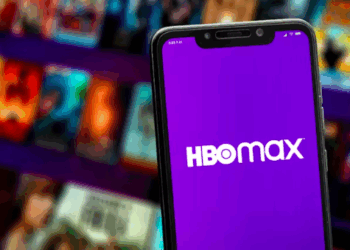Around a decade ago, the term ‘content strategy’ was a relatively new one in the world of media and marketing; and many brands were only beginning to explore what good content – which was relevant, informative, and not solely brand promotional – could do for their businesses.
Fast forward 10 years and content is regarded as an essential part of any marketing and communication strategy. As Forbes points out, content makes your customers trust you more; it attracts new viewers; and it complements inbound marketing.
However, in the realm of out of home (OOH) media, it still seems to get less focus. And this is perhaps understandable – OOH is a medium that needs to catch the viewer’s attention quickly; retaining and imprinting a brand message in a matter of seconds before the consumer changes location. In the case of digital out of home (DOOH), you also have a planned flighting schedule to consider, compiled according to the slots and frequency your advertisers have selected. This leaves little room for much ‘strategy’ in your content.
Yet, as outdoor media owners, I believe that we should be thinking about our content strategy. Yes, displaying our clients’ commercials is our primary reason for existence and that won’t change, but there are other ways we can create stickiness so that people keep looking at our digital billboards, viewing them as a source of not only advertising but also useful information.
The reality is that any marketing channel should effectively integrate both. A good company e-newsletter will have a mix of product or service information intended to encourage sales, as well as content that engages the reader.
As outdoor media owners, our content strategy should answer the following questions:
· How do we find new reasons for consumers to look at our digital billboards?
· How do we create a content-led approach, with our billboards’ inherent space limitations?
· How do we integrate information that is relevant and useful to our community, in a way that is also quick and affordable to roll out?
· How can our billboards provide a service and add more value to our communities?
· Can other content complement the campaigns of our advertisers, creating the kind of stickiness that will benefit our clients?
· How do we empower and uplift our communities, through leveraging the resources at our disposal?
For the past two years at Tractor Outdoor, we’ve kept asking ourselves these very questions.
This has led to us developing a holistic content strategy that we have rolled out across our digital billboards, which aims to integrate community-centric content with our clients’ commercials, creating a good balance of informative and advertising content.
One of the ways that we have delivered on this objective is through the launch of an events platform that allows schools, charities, churches, music groups and other community organisations to promote events in their neighbourhoods – free of charge. By accessing Tractor’s Events Page, users complete a simple form that allows them to upload the details of their function. These informative text updates flight across our network of digital screens in the area where the event is being held, in between our clients’ campaigns. The platform thus acts as a modern take on the old community noticeboard, which you used to see in shopping centres or town halls.
We have also spent time thinking about non-profit organisations (NPOs) that we can support, which will benefit from having access to a high-reach, high-frequency medium such as ours. To this end, we’ve partnered with Missing Children South Africa (MCSA), an organisation that assists the authorities whenever a child goes missing.
When a child disappears, speed is of the essence as the more time that elapses, the lower the likelihood of them being returned safely to their home. The beauty of DOOH is that it enables fast-to-market communication, and so we offered our national network to MCSA on a no-charge basis, allowing for the rapid communication of missing child alerts to key areas.
Another organisation we’ve partnered with is the WOOF Project; a pop-up animal adoption initiative powered by registered NPO by Oscars Arc. Through our network, we give these would-be adoptees exposure, helping to secure them a loving home.
In 2020, with the onset of Covid-19, we launched our #SMEHeroes campaign and advertising fund, to support small businesses that were hardest hit by the pandemic. Through the fund, we provided SMEs with free advertising via our media network to help them survive the country’s challenging lockdown period. Part-and-parcel was a media package that included social and digital adverting, video as well as PR. In this way, we were able to both support and add value to our community during a difficult time.
While these initiatives have been key to our content roll-out, we know that our strategy will continue to evolve. However, it will always be underpinned by the desire to provide value to all of our stakeholders – which includes our advertisers as well as the broader community.
And let’s be honest. Would you want to read a magazine with its pages filled solely with adverts? But a magazine that is chockablock with high-quality editorial features, informative advertorials and visually-arresting ads is something that you could read cover to cover – which also means that you’re far more receptive to the brand messages contained within those pages.
Why should OOH be any different?

Remi du Preez is an integral part of Tractor Outdoor’s leadership team, occupying the role of commercial director. As one of the first individuals to introduce pDOOH to the local outdoor market, he cites his mission as making OOH “more accountable” through the use of innovative technology.














